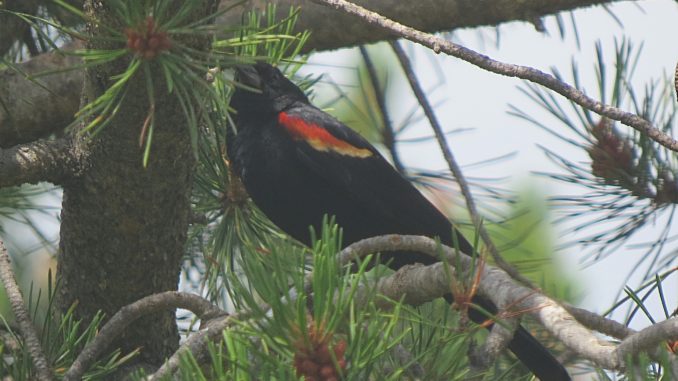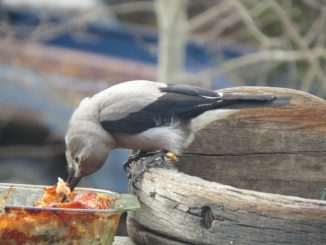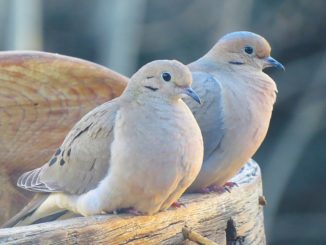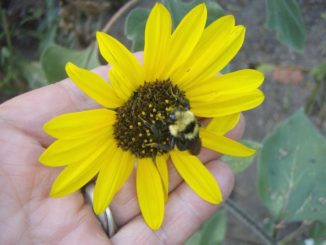
“What the—?!” A tight flock of about a dozen black birds had just wheeled outside the window to settle in a pine.
“Wow, redwings!”
Red-winged blackbirds don’t live way up here in our pine forest at 8100′. We get an occasional bird or pair for a day or two during migration, but it’s not that time yet.
Uh oh. This could only mean one thing.
“Where’s the fire?”
Near the south end of Horsetooth Lake, it turned out, at Coyote Ridge near Loveland. The Spring Glade Fire.
As the smoke plume rose higher, word was spreading fast on social media, because that word “fire” is downright scary.
But the blackbirds had brought us the first warning. Their presence had alerted us a full hour before even Twitter feeds and Facebook posts sounded the alarm.
It wasn’t the first time the avian early warning system has kicked in, here at our remote mountain home.
When a flock of American goldfinches came in several years ago—no, they aren’t residents at our place, either—we knew grasslands were burning somewhere.
Red-winged blackbirds? Fire is somewhere near near a lake, wetland, or other wet area.
Extra Steller’s jays arriving, to join our 30 or so feeder regulars? That was the High Park Fire, and none of those birds stayed long. By the time we ourselves were grabbing minimal possessions and loading pets in the car, resident and refugee jays were long gone, seeking a farther sanctuary.
Like the caged canaries in coal mines, whose behavior warned miners of dangerous gases long before the humans could detect a problem, wild birds and other critters can alert us of danger—if we pay attention.
Just the other morning, I stepped out the door, looking forward to my morning stroll around the gardens and the wild meadow beside our cabin.
How many mariposa lilies had opened overnight? Were the blue field asters blooming yet? Had new colors of that Shirley poppy mix opened their crinkly petals? Maybe there’d be a newly fattened handful of fresh peas to munch….
Pushing open the door, I was greeted with the loud chatter of chickaree pine squirrels.
The pair that live in the east wall of the house were frantically sounding off. So were the west-wall pair. And the ones down in the lower shed. And the ones near the old chicken shed. Even the ones way up above the rocks were hollering about something.
From every direction around the house, the squirrels were sounding alarm calls.
Now, chickarees are famed for being loudmouths, and we often hear chatter from one or another of our resident squirrels. They fight with each other, they yell at jays, they scold roaming dogs and us.
But all of them, all at once?
I knew just how to interpret that, thanks to previous experiences.
“Think I’ll wait a while before I go out for that stroll,” I told my husband, as I firmly closed and latched the door. “The chickarees say there’s a bear around.”
Support Northern Colorado Journalism
Show your support for North Forty News by helping us produce more content. It's a kind and simple gesture that will help us continue to bring more content to you.
BONUS - Donors get a link in their receipt to sign up for our once-per-week instant text messaging alert. Get your e-copy of North Forty News the moment it is released!
Click to Donate



